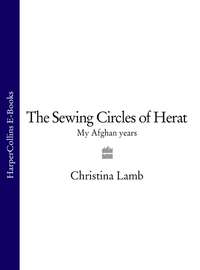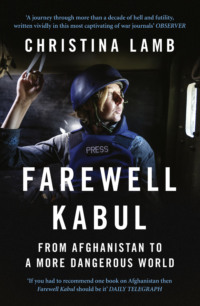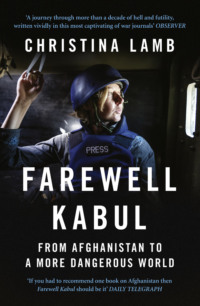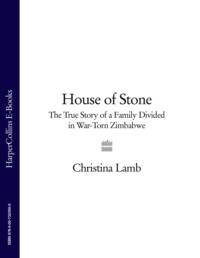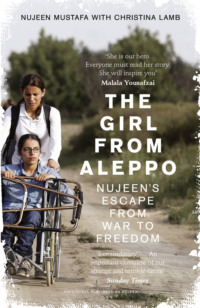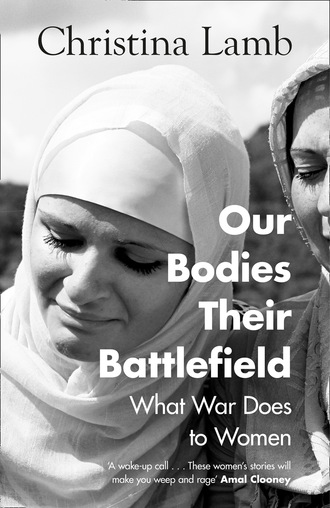
Полная версия
Our Bodies, Their Battlefield
During the Second World War, when Burma’s nationalists supported the Japanese occupiers, the Rohingya sided with the British who had promised them a separate land. Afterwards, the British rewarded the Rohingya with prestigious government posts. But when partition of British Indian territories in 1947 etched a line between what is now Rakhine state and what was then East Pakistan, now Bangladesh, the promised autonomous state never materialised.
After Burmese independence in 1948, some Rohingya mounted a rebellion but this was crushed. When the military seized power in 1962, their situation deteriorated. The junta in Rangoon saw minority groups as a threat to Buddhist nationalist identity. They were disenfranchised, denied citizenship, corralled into slave labour, banned even from travelling outside their villages or marrying without permission.
The first exodus was in 1978 and there were waves again after further attacks, such as the one which had sent Shahida fleeing in 1992, and others in 2012 and 2016. Inside Burma, more than 100,000 Rohingya had been picked up and put into what were basically internment camps near Sittwe, the capital of Rakhine. A conference at Harvard in 2014 described their situation as a ‘slow-burning genocide’.†
One might have thought things would change with the 2015 elections which swept Suu Kyi and her National League for Democracy to an overwhelming majority in Parliament. Burma was welcomed back into the international community and sanctions lifted.
She had after all told the Nobel Women’s Initiative in 2011: ‘Rape is used in my country as a weapon against those who only want to live in peace, who only want to assert their basic human rights. Especially in the areas of ethnic nationalities, rape is rife. It is used as a weapon by armed forces to intimidate the ethnic nationalities and to divide our country.’
A year after that, however, she took a very different line when Samantha Power, then US ambassador to the UN, used a visit to bring up the issue of state violence against the Rohingya, and appealed to her to raise her voice. ‘Do not forget there is violence on both sides,’ Suu Kyi replied, adding, ‘you should not rely on propaganda for your information. Muslim countries are hyping events.’‡
In October 2016, a year after her election, security forces conducted what they termed ‘a clearance operation’ in northern Rakhine state. Villages were burnt down, hundreds killed, including children, and women gang-raped. Around 90,000 were forced to flee.
A UN report said 52 per cent of women had been raped and told of children as young as eight months having their throats slit. ‘The devastating cruelty to which these Rohingya children have been subjected is unbearable,’ commented Zeid Ra’ad al Hussein, the Jordanian diplomat who was then UN High Commissioner for Human Rights, which put out the report. ‘What kind of hatred could make a man stab a baby crying out for his mother’s milk? And for the mother to witness this murder while she is being gang-raped by the very security forces who should be protecting her.’§
Once again they got away with it. Indeed the campaign saw the regime increase its popularity at home as defender of Buddhist values in the face of ‘invading Muslim hordes’. They used Facebook, which is very popular in Burma, to incite hatred against the Rohingya, posing as fans of pop stars and creating celebrity pages full of incendiary comments that portray Islam as a global threat to Buddhism and the Rohingya as a threat to national identity, even though they made up only 5 per cent of its population of 54 million.
Meanwhile they prepared for what some called ‘the Final Solution’. The 2017 onslaught was the worst of all. It was apparently triggered by an attack by the Arakan Rohingya Salvation Army (ARSA), a small militant group, on a series of border posts on 25 August. But the retaliation was unforgiving and clearly pre-planned.
Within three months more than 350 villages were wiped off the map and 700,000 people driven out – the largest forced human migration in recent history. A report by a UN fact-finding mission published in September 2019 stated that at least 10,000 Rohingya had been killed. Based on interviews with nearly 1300 victims, it included graphic accounts of women tied by their hair or hands to trees then raped, and villages scattered with bodies of women with blood between their legs, in a regime campaign to ‘erase their identity and remove them from the country’, and warned that the 600,000 still in Burma ‘remain the target’. The investigators said they had a confidential list of 100 names involved in war crimes and called for the international community to act and for the prosecution of senior generals.¶
Pramila Patten, the UN’s Special Representative on Sexual Violence, accused the Burmese military of using rape as a ‘calculated tool of terror to force targeted populations to flee’.
The Burmese government dismissed the reports as ‘Fake Rape’. Colonel Phone Tint, Rakhine’s minister for border affairs, even told journalists: ‘These women were claiming they were raped, but look at their appearances – do you think they are attractive enough to be raped?’
We could not independently check these stories as Burmese authorities would not let journalists into Rakhine state. But satellite images taken by Human Rights Watch clearly showed 345 villages destroyed. And in the accounts of rape of the women I was interviewing there was a sickening similarity. Some of the women showed me bite marks on their hands or cheeks and shyly lifted trousers to reveal scars from shot wounds or bruises. Their eyes spoke pain.
Why had the international community turned a blind eye? Were they so dazzled by the lady with the flowers in her hair and story of courage that they ignored the attacks? Did they care more about not wanting to rock the transition than the fate of the poor Rohingyas?
Azeem Ibrahim, a Scottish academic who had written a book on the Rohingya as well as endless newspaper columns warning of impending genocide, had another view. ‘The problem is the Rohingya are right at the bottom of the global ladder,’ he said. ‘No one can name a single Rohingya, they have no leadership, no office on K Street. They are mostly rickshaw pullers, fishermen and subsistence farmers.’
Were anyone to take action, they would need evidence and I kept asking if anyone was gathering it. The difficulties of such an enterprise became clear one morning when I was taken to OO section of the camp by a Save the Children press officer to meet a woman who had been raped and shot and apparently was very keen to tell her story.
Sanoara Begum, thirty-five, was about to have lunch when we arrived at her shelter so we left her and went for a walk. Along the way was a washing area where men and boys in lungis were shampooing and soaping themselves from buckets filled from a tap.
What did women do? I wondered. Some told me they were hardly eating so they could avoid using the latrine.
When we got back to Sanoara’s shelter there was a queue. The New York Times and a local journalist were waiting outside. An NBC crew was hovering nearby.
‘Can we do it as quickly as possible?’ Sanoara asked me. ‘You can see there are others.’
I wondered about leaving. But having hung around that long, it seemed churlish not to at least hear her story, so I squatted inside on the jute matting marked UNHCR. Her husband and son sat behind me by the entrance, which was not ideal given the nature of the discussion.
She told me she was from Boli Bazaar, in Maungdaw, a village which had already been targeted in 2016. ‘First the military came to our village and burnt all the houses so we fled to another village called Leda. But then the next night they came there about 9 p.m. and shouted all you people must leave Myanmar, why are you still here? Then they started killing the men. They took my older son Mohammad Shaufiq and shot him in the chest and slit his throat. He was fifteen.
‘After that around midnight they seized younger girls and married women and took us to a school. There were six of us, four young girls and two married women and me. Two of us were pregnant. I was eight months pregnant.
‘They bound my hands and legs and threw me on the ground. I was raped by twelve soldiers, three at a time. I kept thinking about the baby and what would happen. They bit me. When I tried to resist they beat me with the gun, look I lost two teeth.’
She pulled back her top lip to show me a gap.
‘After a while I was senseless then three more men came. One of them told me if you tell anyone we will kill you. Then another came in and shot me – they shot me twice, in my right knee and by my vagina.’ She lifted up her trousers to show me. ‘Once with a pistol and once a big gun.
‘I lay so still I didn’t even dare move my eyeballs. Then I can’t remember anything. My husband and brother came to me and carried me. They thought I was dead but my fingers were moving a little so they realised I was alive.
‘They sold my daughter’s gold nose ring and took me to a doctor who gave me some medicine. I gave birth to the baby on the banks of the river but it was dead so we buried it there. I was a mother of four but now there are only two.’
She started crying then gestured around the small black plastic shelter, barely larger than a disabled toilet cubicle, with its mud floor and a fire at one side for cooking, which was surely a fire hazard.
‘Look how we live,’ she said. ‘In Boli Bazaar we had lots of property. Our bathroom was bigger than this shelter. My husband had a tuk-tuk and my elder children had bicycles to go to school. My husband had magical healing powers. We had fourteen cattle and sixteen goats. I had a good bed, good food. Now we are in this nasty place. We have no money, we can’t even buy a fish.’
At that point I sensed a movement near my rucksack just behind me. My interpreter Sonali had also noticed and suggested I moved it in front of us. I vaguely noticed the husband and son had gone. We continued.
‘My husband and brother carried me the whole journey on a blanket because I couldn’t walk. It was six days walking to the river and we had to stop three days on a hill so they could rest.
‘We crossed by boat then we got to the border at Utipara. I was bleeding from the shot wounds so they took me in a tuk-tuk to Kutupalong camp and I was treated. I feel very much pain.
‘Now I don’t want to have sex. But my husband beats me. He says if I don’t cooperate he will take another wife.’
She began weeping. Then she said it was time for the next interview.
It wasn’t something I normally did but I asked if I could take her photograph, not for publication but to remember. I slid my hand into the rucksack pocket for my iPhone. I noticed a fleeting moment of panic cross her face. The phone wasn’t there. I was baffled – I’d been using it just before we went in the tent and tucked it in the pocket when we got in so I knew I had it.
‘You shouldn’t have left it by the entrance!’ she scolded. ‘A beggar took it.’
‘But your husband and son were sitting there,’ I replied. ‘Where have they gone?’
She started yelling. Soon a beggar was produced. She was an old woman with a string bag that Sonoara demanded she empty out. There was no iPhone, just a woollen hat.
‘This poor woman is nothing to do with this,’ I told Sonoara. ‘Where is your husband?’
The Save the Children representative told her that we would have to call the camp police and suggested she might like to find her husband. I waited outside the tent and the husband was fetched.
‘He knows black magic so maybe he can find it,’ said Sonoara.
After a heated discussion between her and her husband, the phone was miraculously produced and thrust at me by the husband. ‘He found it from a boy using his black magic and beat him,’ said Sonoara.
‘Black magic,’ I nodded.
I stepped over a cesspit outside and walked away. That evening at Mermaid Beach, a raucous group of fellow journalists and aid workers had gathered on a table on the grey sand, ordering spicy lime prawns and drinking beer. Holding court was an enthusiastic American from something called the Institute of the Future in Palo Alto, explaining his plan to erect towers throughout the camp from which to beam Bollywood movies to bored refugees. I asked if he realised the Rohingya were Muslims and there was no way the imams would agree. Then I felt mean – he just wanted to give them something to do in a place where there was nothing to do and nowhere to go, just wait and remember.
I was sitting next to Hannah Beech, a New York Times journalist whose work I greatly admired. She asked about my day so I recounted the story of the rape victim and the phone. She told me that she had spent the day with three unaccompanied children she had met and their uncle in order to write a profile. She had gradually become suspicious that something didn’t stack up. It turned out they were not unaccompanied at all but the children of the man who had presented himself as the kindly uncle.
We were both annoyed. But we also wondered how desperate must people be to do such things or make up such stories. Or were they so traumatised they didn’t know what was real anymore? The refugee commissioner had told me some Rohingyas were so disoriented that they were confusing antiseptic liquids for milk and drinking them. And what of us, the beast we were encouraging them to feed, endlessly looking to devour ever more horrific accounts. Were we really any different to that perhaps apocryphal TV reporter who shouted ‘Anyone here been raped and speaks English?’ to a planeload of Belgian nuns who had just been rescued from a siege in eastern Congo?
* Willem van Schendel (ed.), Francis Buchanan in Southeast Bengal (1798): His Journey to Chittagong, the Chittagong Hill Tracts, Noakhali and Comilla (Dhaka: Dhaka University Press, 1992).
† Dr Maung Zarni and Alice Cowley in Pacific Rim Law & Policy Journal, University of Washington, June 2014.
‡ Samantha Power, The Education of an Idealist (London: William Collins, 2019), pp. 315–16.
§ Flash Report of OCHCR mission to Bangladesh, 3 February 2017.
¶ Report of Independent International Fact-Finding Mission on Myanmar, 16 September 2019.
Конец ознакомительного фрагмента.
Текст предоставлен ООО «ЛитРес».
Прочитайте эту книгу целиком, купив полную легальную версию на ЛитРес.
Безопасно оплатить книгу можно банковской картой Visa, MasterCard, Maestro, со счета мобильного телефона, с платежного терминала, в салоне МТС или Связной, через PayPal, WebMoney, Яндекс.Деньги, QIWI Кошелек, бонусными картами или другим удобным Вам способом.


